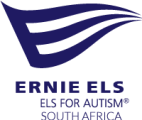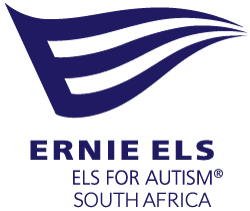
ABOUT ELS FOR AUTISM | SOUTH AFRICA
The Els for Autism Foundation was established in 2009 by Ernie and Liezl Els to focus on the issue of autism, just a few years after discovering that their son Ben was profoundly impacted by the disorder, which affects 1 in 59 individuals. Els for Autism thus aims to provide families across the globe with best practice interventions and support. In early January 2011, Ernie and Liezl Els embarked on a goal to create a service that would allow lower-resourced families of children on the spectrum in South Africa with free access to effective treatment.
Els for Autism | South Africa focuses on empowering parents and caregivers by teaching them how to teach their child . Each session at the centre is designed to promote parents independence using online tools such as RethinkEd : https://www.rethinked.com/, as well as manuals such as the Rubi Network: https://www.rubinetwork.org/, to enhance parents knowledge of best practices in teaching a child with autism.
| GLOBAL VISION | Els for Autism is a game-changing resource, delivering and facilitating programs that are leading examples of what can be available to people with autism spectrum disorder (ASD). | |
| GLOBAL MISSION | We are committed to better understanding the aspirations of people with autism spectrum disorder and helping them to fulfill their potential to lead positive, productive and rewarding lives, through: | |
| Understanding the nature of ASD and facilitating the development and delivery of treatment therapies, educational programs, training programs, and recreational programs as well as independent living programs | ||
| Ensuring the development of global outreach that will facilitate the sharing of best practices and programs | ||
| Raising awareness and promoting the value, acceptance, and inclusion of people with ASD | ||
| GLOBAL GOALS | Provide high-quality information, intervention, education and support to local, state, national, and international families of diverse cultures | |
| Provide programs based on best practices and develop innovative interventions through investigative study and analysis | ||
| Engage in research to further knowledge in the field of ASD | ||
| Establish funding required to sustain the mission and program goals through grants, donations, and events |
| Els for Autism is a game-changing resource, delivering and facilitating programs that are leading examples of what can be available to people with autism spectrum disorder (ASD). |
| We are committed to better understanding the aspirations of people with autism spectrum disorder and helping them to fulfill their potential to lead positive, productive and rewarding lives, through: | |
| Understanding the nature of ASD and facilitating the development and delivery of treatment therapies, educational programs, training programs, and recreational programs as well as independent living programs | |
| Ensuring the development of global outreach that will facilitate the sharing of best practices and programs | |
| Raising awareness and promoting the value, acceptance, and inclusion of people with ASD |
| Provide high-quality information, intervention, education and support to local, state, national, and international families of diverse cultures | |
| Provide programs based on best practices and develop innovative interventions through investigative study and analysis | |
| Engage in research to further knowledge in the field of ASD | |
| Establish funding required to sustain the mission and program goals through grants, donations, and events |
ABOUT THE AUTISM SPECTRUM
Autism spectrum disorder (ASD) is a developmental disability that is caused by differences in how the brain functions. People with ASD may communicate, interact, behave and learn in different ways. Signs of ASD begin during early childhood and usually last throughout a person’s life.
PREVALENCE

ONE IN 36
children has been
identified with ASD.

ASD is about 4 TIMES
more common among boys
than among girls.

ASD is reported to occur in
all racial, ethnic, and
socioeconomic groups.
RISK FACTORS AND CHARACTERISTICS
Studies have shown that among identical twins, if one child has ASD, then the other will be affected about 36-95% of the time. In non-identical twins, if one child has ASD, then the other is affected about 0-31% of the time. Parents who have a child with ASD have a 2%–18% chance of having a second child who is also affected. Children born to older parents are at a higher risk for having ASD.
DIAGNOSIS
Research has shown that a diagnosis of autism at age 2 can be reliable, valid, and stable. Even though ASD can be diagnosed as early as age 2 years, most children are not diagnosed with ASD until after age 4 years.
Studies have shown that parents of children with ASD notice a developmental problem before their child’s first birthday. Concerns about vision and hearing were more often reported in the first year, and differences in social, communication, and fine motor skills were evident from 6 months of age.
Source: Center for Disease Control’s Autism and Developmental Disabilities Monitoring (ADDM) Network.

No smiles; doesn’t
regard familiar faces
and poor eye
contact

Doesn’t imitate
sounds and gestures

No response to name,
no babbling, doesn’t
play peek-a-boo, no
gestures such as
waving, pointing or
showing

No meaningful single
words, not able to
pretend play like
feeding the doll,
driving the car

No meaningful
two-word phrases
and no imitation of
day-to-day activities

